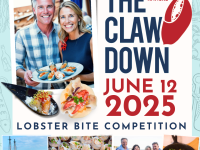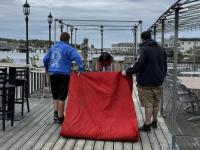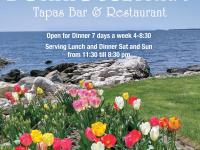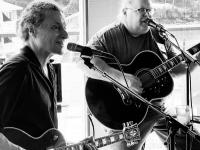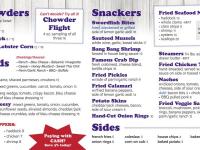Working at Hodgdon Yachts
The past two months at Hodgdon Yachts in East Boothbay have been an incredible experience. The amount of knowledge I have been presented with and retained is extensive, from basics, such as sanding techniques, to more complex material, such as the science behind resin's exothermic properties. Every day I spend at Hodgdon Yachts, I learn something new.
The first few days spent at work study, I was in observation mode. I watched Roslyn and Chad laying up a new infusion table that would soon take up a place in one of the clean rooms. This new table had a core like many others, however, one difference was the tubing that ran through the whole table. The tubing is the same product that is placed in home flooring for heating. Hollow channels in the tubing allow for warm water to flow through, thus heating its surroundings.
The reason for building such a table is a problem that can be encountered during the infusion process. When a part is infused on a table, the table is often colder than the materials being placed upon it. This can cause a part to set properly in some places and not in others. The heated table will solve these issues because it will be one consistently warm temperature.
After a few days of observing, I got to jump in and help, which involved laying long sheets of fiberglass over the length and width of the table. Over the next few days, I helped Chad and Roslyn lay up other parts for various purposes.
After the first few weeks, brainstorming began on my long-board project. We decided that it would be best to cut strips of foam to a length longer than my board and glue those strips together to form a mold. This mold would give the board its concave and camber (angle) in the end. The first step I took to build my board was the creation of templates for the concave. The templates would allow me to judge the amount of concave in the board I would soon build. To do this, I used my present board, and with a scribe block, I transferred the shape of the concave onto a piece of paper. I did this for multiple points along the length of the board.
In the end, I had a set of templates with varying degrees of concave. Following the creation of these templates, I created a set that displayed the camber of my present board. We then used the templates to draw camber onto six strips of foam we had previously cut. Coincidentally, after further thinking, we ended up scrapping the idea of the templates. Instead, we came up with our own measurements for camber and concave, which we thought would look and work best.
These measurements ended up being 12mm of camber, fore to aft, and 5mm of concave, side to side. To create this shape, we drew reference lines on each strip of foam and measured 6mm up from this line dead center, and 6mm down from reference on each end. We then used an improvised batten, used to make fair curves, to connect these points. For concave, we measured up either 3mm or 2mm on the opposing side of the reference line on each end and connected this point to the reference end of each reference line.
After all the lines were drawn, it was time to cut the strips. To do so, we angled the band saw to match our concave lines on each end and cut along the camber line. After the strips were cut, we glued them together using resin thickened with Microlight, a low-density thickener made of extremely fine ground plastic. Following the gluing, we sanded the joined strips until the transitions between high and low points were fair. We then glued strips around the border of the mold to create extra space for vacuum lines and other material when we reached infusion, sanding again to ensure the mold was smooth. Now that the mold had been thoroughly sanded, it was ready to be glassed over with fiberglass. This is the point we are at now. After the mold is glassed, we will further sand the surface and finish by spraying it with Duratec, a high-gloss surface primer. Once this step is complete, we will be able to lay up a board on the mold.
While at Hodgdon Yachts, I have realized that research and design are the most important parts of the building process. No matter how hard you try not to, you will run into some sort of obstacle. What I have written here does display a great deal of knowledge, but there is no way to fully show every bit of information I have soaked up. I can only hope that when my board is finished, onlookers will be able to see the amount of work and thought put into it.
Event Date
Address
United States











